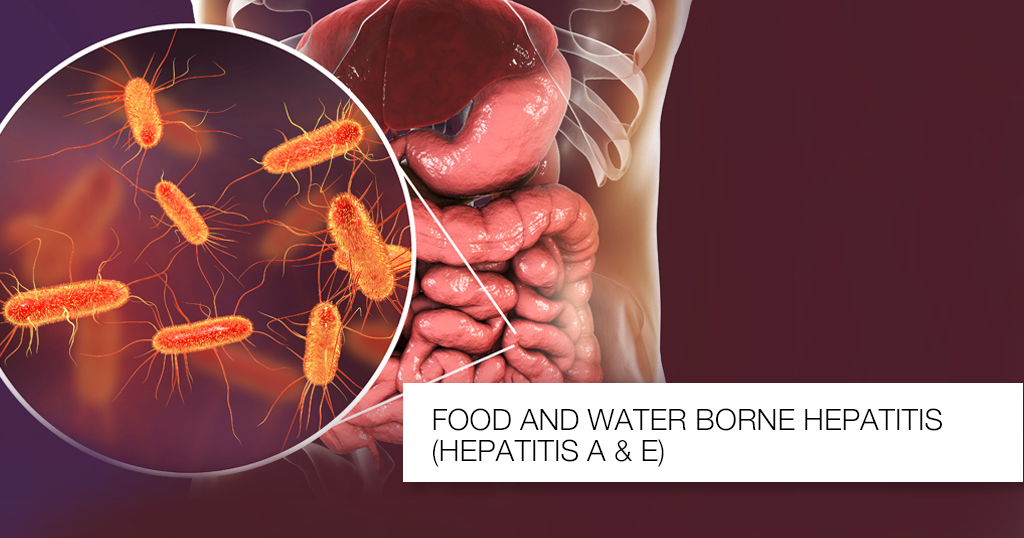Dr Sudeep Khanna, MD, DM
Sr. Consultant, Gastroenterology
Apollo Indraprastha Hospital, New Delhi
Viral hepatitis is as much a public health problem in India as are HIV/AIDS, malaria and tuberculosis. Hepatitis means “inflammation of the liver” that can over a period of time, may or may not cause irreversible injury to the liver both in the short and the long term.
Transmission- Hepatitis A and E, both are food and water borne. Both the viruses are shed in the stool. HAV, most commonly spreads when a person who has the infection does not wash hands after using the bathroom and then touches food, a surface, or another person’s mouth. HAV outbreaks in the community have been reported due contamination of water or food.
HEV infection spreads by fecally contaminated water in endemic areas. In countries like India with poor sanitation, there is a baseline endemic of HEV, which can change into explosive epidemic intermittently. HEV has also been reported to spread from mother to the child during delivery, from animal like pigs and even blood transfusions.
The presenting symptoms of both HAV and HEV are overlapping. For HAV, the severity of symptoms depends upon the person’s age; in children, there may be few or no symptoms (sub-clinical infection). In adults, the disease is generally symptomatic and prolonged. Both HAV and HEV can rarely cause acute liver failure which leads to involvement of brain and a high death rate. Symptoms unrelated to involvement of the liver may also be manifested which include: Blood abnormalities like low platelet count, hemolysis, and aplastic anemia; acute thyroiditis; membranous glomerulonephritis,; acute pancreatitis; neurologic diseases including- transverse myelitis, meningoencephalitis, aseptic meningitis, neuropathies, etc.
The initial symptoms of HAV and HEV infection may include, fatigue, nausea, fever, loss of appetite, right upper abdominal pain. With the progression of the illness dark-colored urine, light-colored stools, yellowing of the skin or whites of the eyes (jaundice), and itchy skin may develop.
Both hepatitis A and E cause acute hepatitis (duration of illness, less than 3 months).Under rare circumstances, HEV can cause chronic infection in patients whose immunity is lowered by drugs, e.g. cancer patients or post-transplant patients. HEV infection is one of the most common cause of deterioration of liver function in patients who have significant underlying liver disease due to other causes like fatty liver, alcohol and hepatitis B infection.
In countries like India, where HEV infection is endemic, acute liver failure occurs more frequently when HEV occurs during pregnancy. Acute HEV infection during pregnancy has been associated with a mortality rate of 15 to 25 percent.
Diagnosis-The diagnosis of HAV and HEV infection is made by simple blood tests. Presence of IgM antibodies against the specific antigen of the viruses is detected in the blood. In patients with suspected chronic HEV infection, the amount of virus present in the blood is also detected. Laboratory findings include elevated serum concentrations of bilirubin, alanine aminotransferase (ALT), and aspartate
aminotransferase. Symptoms coincide with a sharp rise in serum ALT levels, which may rise up into the thousands and return to normal during recovery. Resolution of the abnormal biochemical tests generally occurs within two to six weeks after the onset of the illness. Increasing Prothrombin time may be the earliest warning sign of patient likely to develop acute liver failure and die.
Treatment-There is no cure for hepatitis A or HEV virus infection; most people recover with supportive treatments at home, including rest and good nutrition. Though, there are no clear recommendations for when a patient can resume work, an infected person should not join back work or school until the fever and jaundice have resolved and the appetite has returned. AST/ALT levels under 100 IU/L may be a safer level to resume mild physical activity. Most people with HAV infection will recover fully with in three months. A small percentage of HAV infected patients will have prolonged or relapsing symptoms for six to nine months. HAV infection gives lifelong immunity. After an episode of HEV infection, the Immunity may last from 18 to 24 months.
Prevention of HAV infection- Washing of hands is a very effective strategy for reducing transmission as the virus can live on a person’s fingers for up to four hours. Hands should ideally be wet with water and plain or antimicrobial soap and rubbed together for 15 to 30 seconds. Alcohol-based hand rubs may not be as effective as soap and water.Taking precautions when cooking reduces the chance of infection.
These precautions include-drinking only pasteurized milk, washing raw fruits and vegetables thoroughly, cook raw meat at the recommended temperature, etc. Prevention of HEV infection includes avoidance of water of unknown purity, food from street vendors, raw or undercooked seafood, meat or pork products, and raw vegetables.
With the availability of HAV vaccine, all the children and people at high risk of acquiring HAV infection should be vaccinated.


















